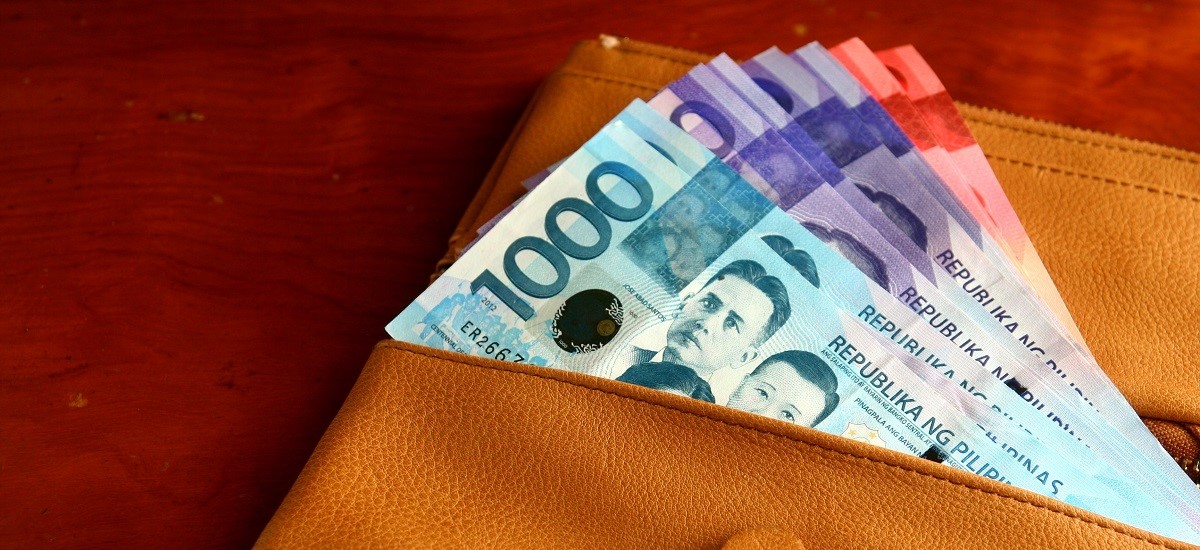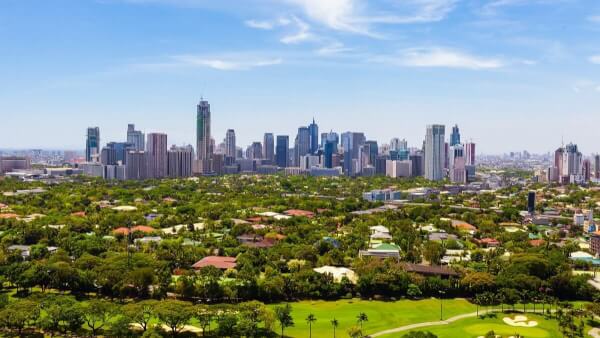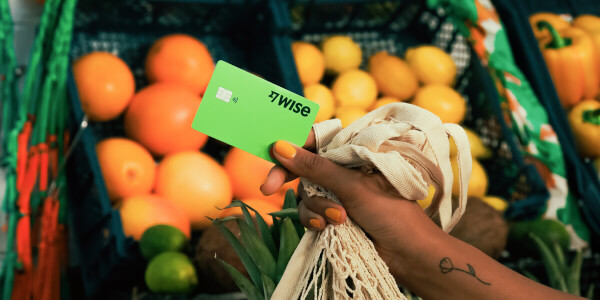Money in the Philippines: Banks, ATMs, cards and currency exchange
Read our essential guide to money in the Philippines, including banks, ATMs, cards and currency exchange.

Jetting off to the Philippines from the UK? Perhaps you’re going island hopping, enjoying the country’s idyllic beaches and wonderful food, or even considering moving there.
Whether you’re in the Philippines to work or play, you’re going to need some cash. Using ATMs to get the pesos you need to cover your stay is a convenient choice for many travellers and expats.
Read on for a full guide to using ATMs in the Philippines. This includes info on fees, exchange rates and lots more.
We’ll even show you a super convenient way to spend abroad using the Wise card, which works in 160+ countries at low, transparent fees*.
How easy it is to find an ATM will depend on exactly where you are in the Philippines.
In Metro Manila, along with other cities and larger towns, there’s no shortage of ATMs to be found in or near bank branches, shopping centres and supermarkets. You’ll also find ATMs in major airports in the country.
However, once you hit more remote and rural areas, you might find it difficult to locate a cash machine.
To find your nearest ATMs during your trip, you can use these ATM locator tools from major banks in the Philippines:
ATMs are generally just called ATMs in the Philippines, so you don’t need to worry about any confusing terminology. They should look similar to the cash machines you’ll find in the UK.
ATMs in the Philippines generally accept Visa and Mastercard debit and credit cards, which are the most commonly issued cards in the UK.
So, you should be able to use your UK-issued card abroad without any problems. Just make sure you check with your home bank or card provider about any potential charges.
You can search for your nearest cash machine with these global ATM locators:
If you have an American Express card, you might only be able to use it at Banco de Oro (BDO) ATMs.1 Other bank’s ATMs may not accept AMEX.
ATMs in the Philippines generally only accept a 4-digit PIN,2 which is the same as in the UK.
Many shops and merchants in the country accept chip and PIN cards, but some may use the older swipe system - where the card is swiped through the terminal. Your card should have both, but it’s worth checking before you travel.
How much you can withdraw at once (or per day) from ATMs overseas largely depends on the limits set by your home bank or card provider.
However, Philippines ATMs do have some maximum cash withdrawal limits. It varies between banks, generally ranging from 10,000 to 20,000 PHP (approx. £134 to £268 GBP).2
Nowadays, you don’t need to tell your bank that you’ll be using your debit card abroad.
But while it isn’t essential, you might want to do it anyway - just in case your transactions in the Philippines flag up as potential fraud. In a worst case scenario, your card could be blocked.

It could even be worth getting an alternative spending card, one that is specially designed for international travel.
The Wise card is the ideal travel companion, as it works in 160+ countries and lets you withdraw up to £200 a month (max. 2 withdrawals) from overseas ATMs without any fees*.
Of course, you’ll just need to check that the ATM operator doesn’t charge its own fees.
Choose to withdraw in the local currency and your Wise card will do the currency conversion at the mid-market exchange rate with only a small conversion fee*.
This means no expensive mark-ups eating into your spending money.
Now we come to the important question - how much will it cost to withdraw cash from ATMs in the Philippines?
There are a few factors to consider, including the exchange rate, ATM fees and your home bank’s charges for overseas transactions.
When you use an ATM abroad, you’ll usually be presented with a screen asking if you want the transaction to be carried out in British pounds (GBP) or the local currency - which in this case is Philippine pesos (PHP).
It’s always recommended to choose to withdraw in the local currency, without a currency conversion. This will mean you get a better rate, as the conversion will be done by your bank or card provider instead.
This is because if you choose to be charged in your home currency (GBP), the ATM will apply its own exchange rate using something called Dynamic Currency Conversion (DCC). This rate will almost certainly be unfavourable, essentially adding an extra charge for using the ATM. Ultimately, it could make the transaction expensive for you.
So the bottom line is - always press ‘no’ when asked about currency conversion.
Check out the latest GBP - PHP conversion rates below:
Some UK banks charge fees for foreign transactions, which includes cash withdrawals. So always check before you travel, either by contacting your bank or reading the terms and conditions for your account.
ATMs in the Philippines tend to charge fees of around 250 to 300 PHP (approx. £3.35 to £4 GBP).2 However, there may be a way to avoid this fee - we’ll look at this next.
Although you’ll need to check whether this is still the case, HSBC ATMs in the Philippines don’t charge fees if you use a foreign-issued card.3
The only drawback with this is that there aren’t many HSBC ATMs in the country - with most being in Manila.
Additionally, it may be possible to withdraw cash for free (or for lower fees) if your UK bank has a partnership with a bank in the Philippines. It’s always worth asking your bank about this before you travel, so you know which bank's ATMs to look out for.

Some ATMs may offer you a ‘service’ of being charged in your local currency (i.e. GBP). It’s always best to decline this option, choosing instead to be charged in PHP.
This helps you avoid hidden ATM rip-offs by giving you the best possible exchange rate.
ATMs at airports tend to be very expensive, charging high fees for withdrawing money or converting currency. So even though they may be convenient, they’re best avoided unless you have no other option.
If your UK bank has an overseas ATM network or partners with banks in the Philippines, you may be able to benefit from low or no fees on ATM withdrawals. It’s always worth finding out before you travel.
Some UK banks don’t charge fees for spending and withdrawing cash overseas. If yours does, it could be worth switching banks and getting a fee-free card.
And crucially - you should never use a credit card to make ATM withdrawals, either at home or abroad.
Paying with a credit card is usually a lot more expensive than using a debit card, as fees are charged for cash transactions. Plus, interest will likely start accruing right away, so you won’t benefit from your usual interest-free period.
If you travel regularly, the Wise card is the perfect way to spend and withdraw cash worldwide.
It’s a dedicated travel card, letting you spend like a local in 160+ countries worldwide. It automatically converts your pounds to the local currency at the mid-market exchange rate whenever you spend for only a small, transparent fee*.
And when you need cash, you can use it to withdraw up to £200 a month (max. 2 withdrawals) fee-free*.
Note: You’ll just need to check whether the ATM operator charges its own fees.
Wise only ever charges small, transparent fees for currency conversion, and it’s fee-free if you already have the currency in your Wise account*.
Sign up for a Wise account online and you can get your own Wise card for a one-time fee of just £7.
Yes, ATMs in the Philippines accept both Visa and Mastercard. And where shops and merchants accept card payments, both these card types should be accepted.
Many shops, restaurants and guest houses in the Philippines prefer cash payments (or simply don’t accept card payments), especially in more rural areas. But in major cities and towns, cards are more widely accepted.
So, it’s worth taking a mix of cash and cards to the Philippines, making sure you have enough cash to keep you going if you’re headed off the beaten track.
BDO charges a fee of 250 PHP (around £3.35 GBP) for ATM withdrawals using a foreign-issued card.4
If you use a BDO card, there’s no fee. For other local cards (issued with Philippine bank accounts), the fee is 18 PHP (around £0.24 GBP).4
HSBC ATMs are among the best options for foreigners, as they don’t charge fees for withdrawals using foreign-issued cards.
Yes, the Wise card works in 150+ countries worldwide, including the Philippines.
Sources used:
Sources last checked on date: 04-July-2024
*Please see terms of use and product availability for your region or visit Wise fees and pricing for the most up to date pricing and fee information.
This publication is provided for general information purposes and does not constitute legal, tax or other professional advice from Wise Payments Limited or its subsidiaries and its affiliates, and it is not intended as a substitute for obtaining advice from a financial advisor or any other professional.
We make no representations, warranties or guarantees, whether expressed or implied, that the content in the publication is accurate, complete or up to date.

Read our essential guide to money in the Philippines, including banks, ATMs, cards and currency exchange.

Read our guide detailing how to withdraw money from Wise in the Philippines and what are the limits and fees included.

Check out our in-depth guide on everything you need to know about buying a prepaid Philippines SIM card, including different providers, pricing, and features.

Should you pay with cash or card in the Philippines? A handy guide including cash etiquette, Filipino ATMs and using your UK card.

Read our detailed guide on vaccinations for the Philippines, including required vaccines, health tips and optional shots.